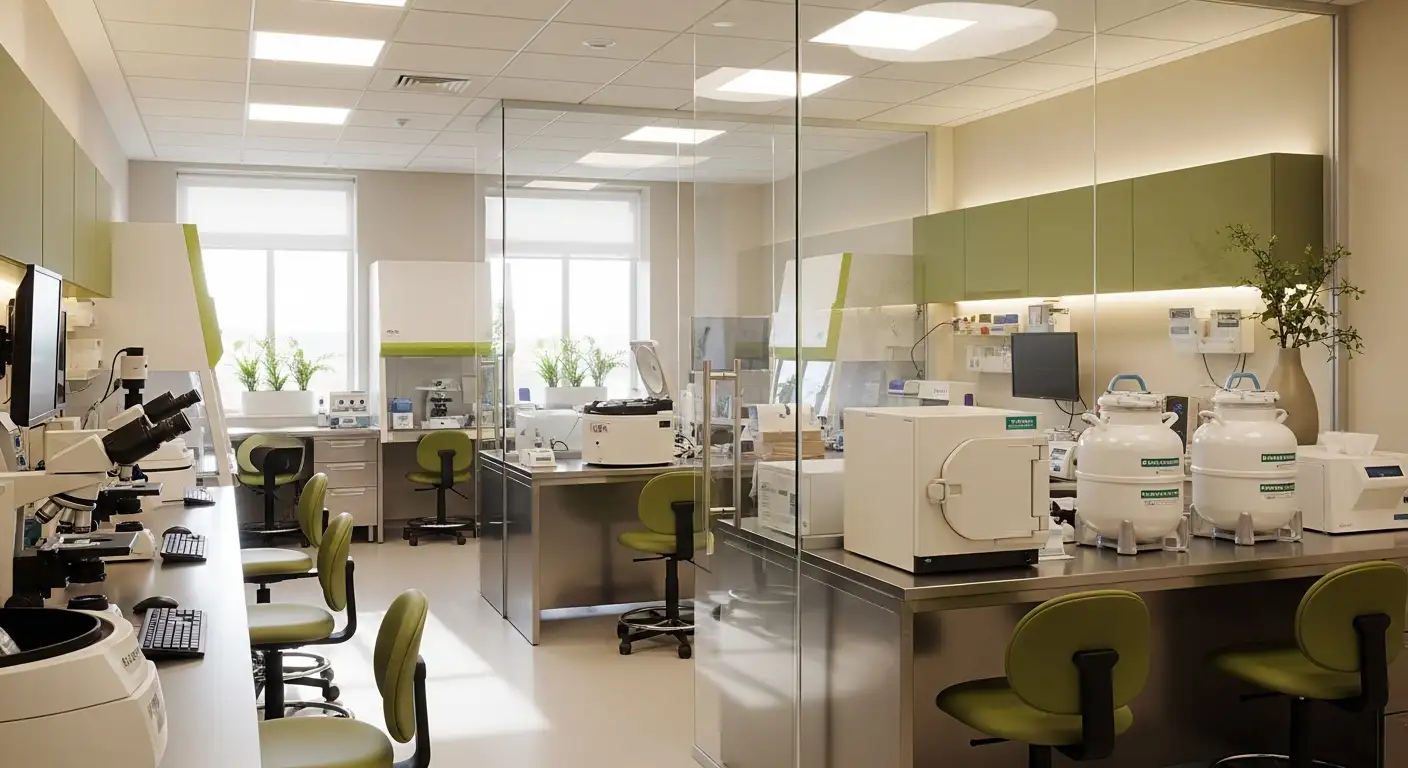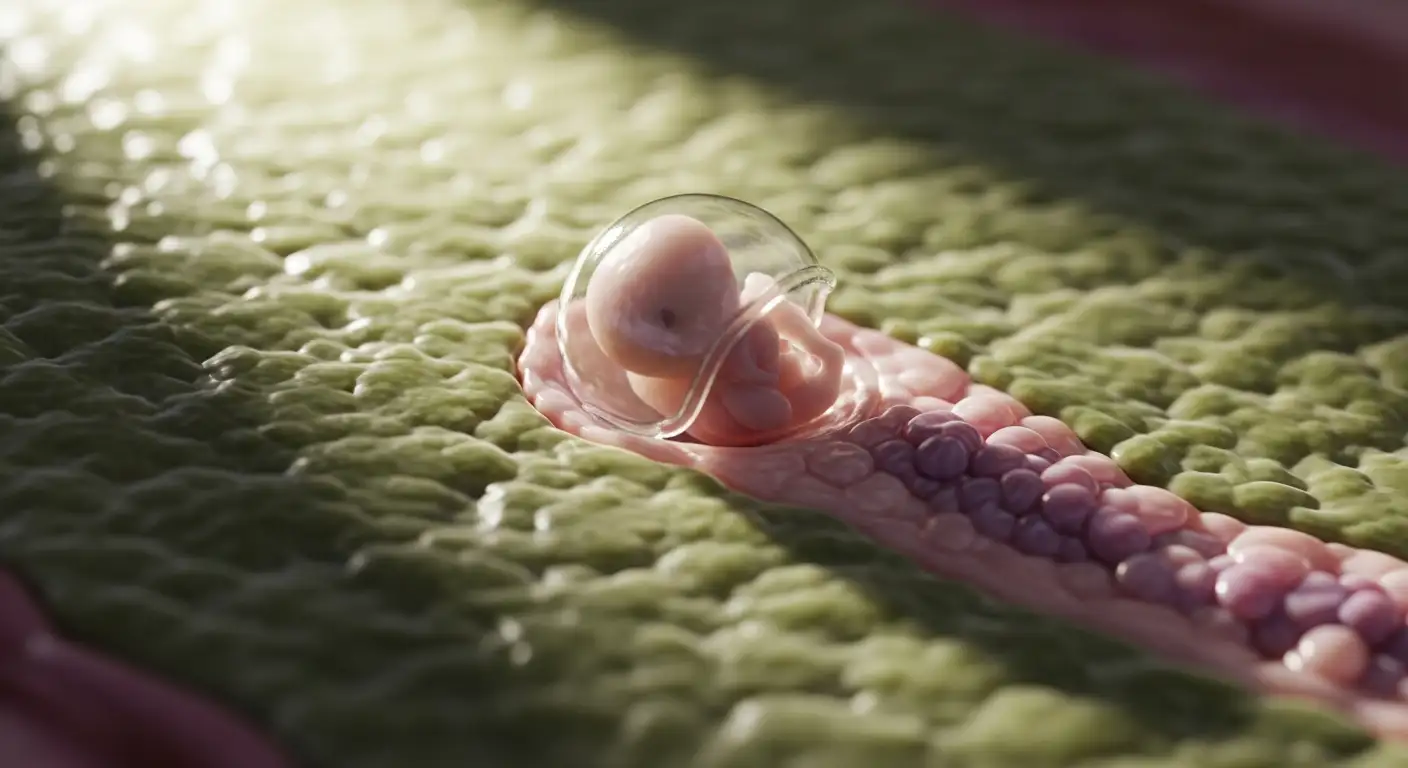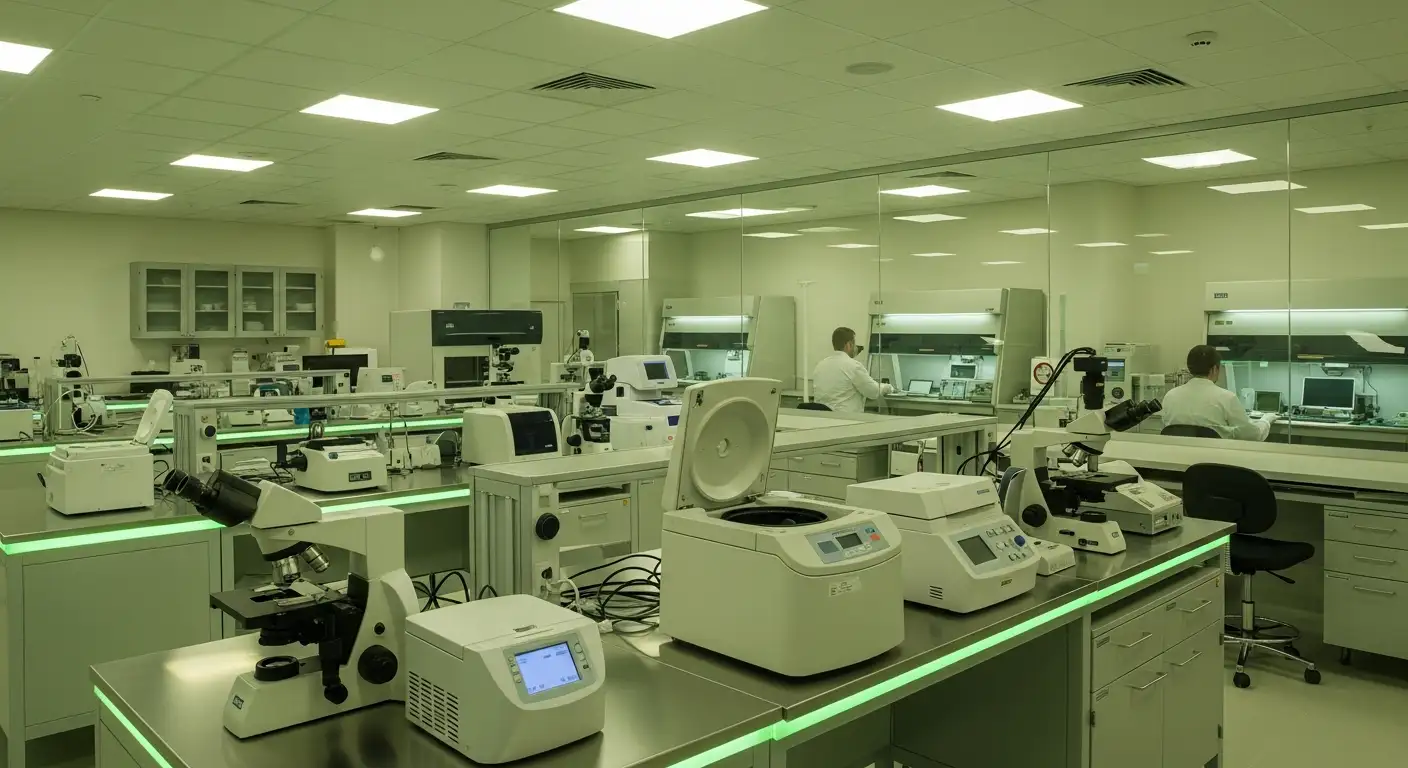How uterine lining thickness affects embryo implantation
Decoding the Impact of Endometrial Thickness on Embryo Implantation Success

Understanding the Role of Uterine Lining in Fertility
The thickness and quality of the uterine lining, or endometrium, play a critical role in embryo implantation—an essential step toward a successful pregnancy. As assisted reproductive technologies (ART) like in vitro fertilization (IVF) become more common, understanding the nuances of how the uterine lining influences implantation rates is vital for patients and clinicians alike. This article explores the scientific insights into endometrial thickness, its interaction with embryo quality, and how current and emerging medical treatments optimize conditions for conception.
The Science Behind Endometrial Thickness and Embryo Implantation
How does uterine lining thickness affect embryo implantation?
Uterine lining thickness plays a crucial role in the success of embryo implantation during IVF treatments. Generally, an endometrial thickness of at least 7 millimeters is linked to better pregnancy outcomes. Studies have shown that pregnancy rates improve as the lining thickens up to about 10 millimeters, where the positive effect plateaus.
What are the optimal thickness ranges for successful implantation?
- Less than 5 mm: Pregnancy rates tend to be lower but not impossible; some patients do conceive successfully with thinner linings.
- 5 mm to 7 mm: Considered adequate, especially in intrauterine insemination (IUI) cycles using letrozole, with pregnancy rates around 17%.
- 7 mm to 10 mm: Ideal range, associated with the highest implantation and pregnancy rates.
- Above 10 mm: No significant increase in success rates compared to the 7–10 mm range.
Additionally, a tri-laminar pattern of the endometrium seen on ultrasound is a positive indicator of receptive uterine conditions.
How does embryo quality correlate with implantation success?
Embryo characteristics significantly influence implantation potential. Specifically, 8-cell embryos on day 3 with less than or equal to 10% fragmentation have the highest chances of successful implantation. Embryo quality and endometrial thickness are independent but complementary predictors of IVF success. This means that even if the lining is not ideal, high-quality embryos may still implant successfully.
Clinical insights and therapies
Some clinics proceed with embryo transfer regardless of thin endometrial linings and report similar live birth rates to clinics that only transfer when the lining is thicker. This suggests that while thickness is important, it is not the sole determinant.
Various therapies aim to improve lining thickness, such as vaginal sildenafil (Viagra), platelet-rich plasma injections, and intrauterine G-CSF administration. These treatments have shown promise in increasing thickness and enhancing pregnancy rates, although their effectiveness can vary among patients.
| Endometrial Thickness (mm) | Pregnancy Outcome | Notes |
|---|---|---|
| < 5 | Lower but possible | Some successful pregnancies occur; not an absolute barrier |
| 5–7 | Adequate for IUI with letrozole | Pregnancy rates around 17%; thicker lining not always necessary |
| 7–10 | Highest success rates | Considered optimal for embryo implantation |
| > 10 | Plateau effect | No significant additional pregnancy benefit |
Understanding the interplay between uterine lining and embryo quality helps fertility specialists tailor treatments, ultimately improving IVF success rates.
Insights from Large-Scale IVF Studies on Uterine Lining and Pregnancy Outcomes

What Does Large-Scale IVF Data Tell Us About Endometrial Thickness?
An extensive analysis covering over 30,000 IVF cycles from multiple fertility centers worldwide provides valuable insights into how the thickness of the uterine lining influences pregnancy outcomes. This large dataset reveals that a thin endometrial lining, often defined as less than 7 millimeters, does not necessarily reduce live birth rates across all clinical settings.
How Do Clinical Practices Vary Regionally Regarding Thin Endometrial Linings?
Significant variations exist in how clinics approach embryo transfers when faced with thin linings. For example, fertility clinics in the UAE frequently proceed with embryo transfer irrespective of endometrial thickness. These centers have found no clear link between thin linings and lower live birth rates. Conversely, clinics in countries like the US and Spain exercise more caution. They often delay or cancel embryo transfers for patients with thin linings, resulting in approximately 20% fewer live births in cases where the endometrial thickness falls below 7 mm.
Is a Thin Endometrial Lining Always a Barrier to Successful Pregnancy?
The recent findings challenge the long-held belief that a thin uterine lining is an absolute barrier to pregnancy. Although a lining under 7 mm has been traditionally viewed as suboptimal, many patients with this measurement still achieve successful pregnancies. This suggests that the thin lining may be a symptom or marker of other underlying issues affecting implantation, rather than the direct cause of implantation failure.
The evidence highlights the importance of considering both embryo quality and uterine environment together when assessing pregnancy chances. Clinics that do not automatically delay or cancel transfers based on lining thickness alone may provide opportunities for successful outcomes even with thin endometrial linings.
| Aspect | UAE Clinics | US & Spanish Clinics |
|---|---|---|
| Approach to Thin Endometrium | Proceed with embryo transfer regardless | Delay or cancel embryo transfers |
| Impact on Live Birth Rates | No correlation with lower birth rates | About 20% fewer live births when <7 mm lining |
| Clinical Implication | Thin lining may not be a barrier by itself | Thin lining treated as a risk factor |
Therapeutic Strategies to Enhance Endometrial Thickness and Receptivity

What medical treatments are available to improve uterine lining thickness?
Various medical therapies are employed to address thin endometrial linings, especially when assessing IVF or other assisted reproductive technologies.
Sildenafil (Viagra): Used vaginally as a gel or suppository, sildenafil has demonstrated potential to increase endometrial thickness beyond 9 mm. Its mechanism likely involves enhanced uterine blood flow, which may help improve receptivity and increase pregnancy rates.
Estradiol Supplements: Vaginal estradiol is often administered empirically to stimulate endometrial proliferation, although evidence for its consistent effectiveness varies.
Platelet-Rich Plasma (PRP) Injections: PRP therapy involves injecting concentrated platelets into the uterus. This has been linked to increased endometrial thickness in some patients, accompanied by positive pregnancy outcomes, including live births.
Granulocyte-Colony Stimulating Factor (G-CSF) Administration: Intrauterine G-CSF can increase lining thickness to at least 7 mm rapidly, often within two days, and may reduce the risk of cycle cancellations through enhanced implantation potential.
Efficacy and limitations of these therapies
Although these interventions offer promise, their effectiveness is not uniform across all patients. Individual response can vary due to underlying conditions influencing both lining development and implantation outcomes. Many treatments are considered empirical and lack definitive clinical trial evidence supporting universal benefit.
Clinicians often tailor therapy based on patient-specific factors, and ongoing research aims to better define which patients might most benefit from each approach. Despite these uncertainties, these therapies represent important options for improving uterine receptivity when faced with a thin endometrial lining.
Interplay of Endometrial Thickness and Fertility Medications in Assisted Reproductive Treatments
How do fertility medications influence uterine lining and implantation?
Fertility drugs play a significant role in shaping the uterine environment necessary for successful implantation. Clomiphene citrate (Clomid), a commonly used ovulation inducer, has been found to sometimes cause thinning of the endometrial lining. This thinning can pose a challenge by potentially lowering the chance for embryo implantation.
On the other hand, letrozole, another medication used to promote ovulation, appears to have a less detrimental effect on the uterine lining. In intrauterine insemination (IUI) cycles, studies show that with letrozole, an endometrial thickness as low as 5 millimeters does not significantly reduce pregnancy chances. Pregnancies rates hover around 17% for women with endometrial linings ranging from 5 to 9 mm, indicating that simply increasing lining thickness above 5 mm may not improve outcomes.
Comparison between Clomid and letrozole
The key difference between Clomid and letrozole lies in their impact on the endometrium. While Clomid is associated with more frequent thinning of the uterine lining, letrozole seems to maintain better lining quality, which is critical for implantation success.
This distinction is important when choosing medications for fertility treatment, especially for patients who are prone to thin endometrial linings or have experienced implantation failure. Letrozole’s favorable profile may help create a more optimal environment for pregnancy.
Impact on pregnancy rates during intrauterine insemination
In IUI cycles stimulated by letrozole—alone or in combination with gonadotropins—the pregnancy success rate has been shown to be consistent across a range of endometrial thicknesses starting from 5 mm. This finding suggests that targeting a thicker lining beyond 5 mm in these cases may not enhance pregnancy outcomes.
Additional factors influencing IUI success include the number of ovarian follicles and the total motile sperm count at insemination, highlighting that while uterine lining is important, it is only one part of the fertility puzzle.
Overall, personalizing fertility medication selection with consideration of its effect on endometrial thickness can help improve assisted reproductive treatment outcomes by fostering a more receptive uterine environment.
Beyond Thickness: Embryo Quality and Future Directions in Predicting Implantation Success

What factors beyond uterine lining influence successful implantation?
Embryo quality plays a significant role in the likelihood of successful implantation, independent of the uterine lining thickness. Specifically, embryos that reach the 8-cell stage by day three and have minimal fragmentation (≤10%) show the highest chances of implantation. These characteristics, including the number of blastomeres and the degree of fragmentation, are strong indicators of the embryo's potential to develop into a pregnancy.
Predictive modeling for implantation success
Current research recognizes that implantation outcomes depend on multiple factors beyond just endometrial thickness. This has led to efforts in developing predictive models that incorporate embryo quality, endometrial features, and other clinical variables. Such models aim to provide patients with a more accurate assessment of their chances for pregnancy.
Future research directions
Future studies intend to refine these predictive tools, enhancing personalization in fertility treatments. By understanding the complex interplay between embryo characteristics and uterine environment, clinicians hope to improve reproductive success rates and offer tailored interventions that optimize both embryo selection and endometrial preparation.
Optimizing Conditions for Successful Embryo Implantation
While uterine lining thickness remains a key marker for embryo implantation potential, it is only part of a complex reproductive puzzle. Both embryo quality and the uterine environment must be ideal for successful pregnancy. Advances in understanding the nuances of endometrial thickness, along with new therapeutic interventions and personalized fertility treatments, promise to enhance implantation rates. Continued research and clinical innovation will enable more precise prediction of pregnancy success and better support for individuals and couples navigating their fertility journeys.
References
- Impact of embryo quality and endometrial thickness on ...
- Thin Endometrium May Not Hinder IVF Success
- Endometrial Receptivity – Thickness in IVF Cycles | FIH
- ASRM 2016: New Study Examines Lining Thickness and ...
- 3 Treatment Options for Increasing Endometrial Thickness
- New techniques in assisted reproductive technology
- Latest Innovations in Fertility Treatments for 2025
- Effects of lifestyle factors on fertility - PubMed Central - NIH


































































































